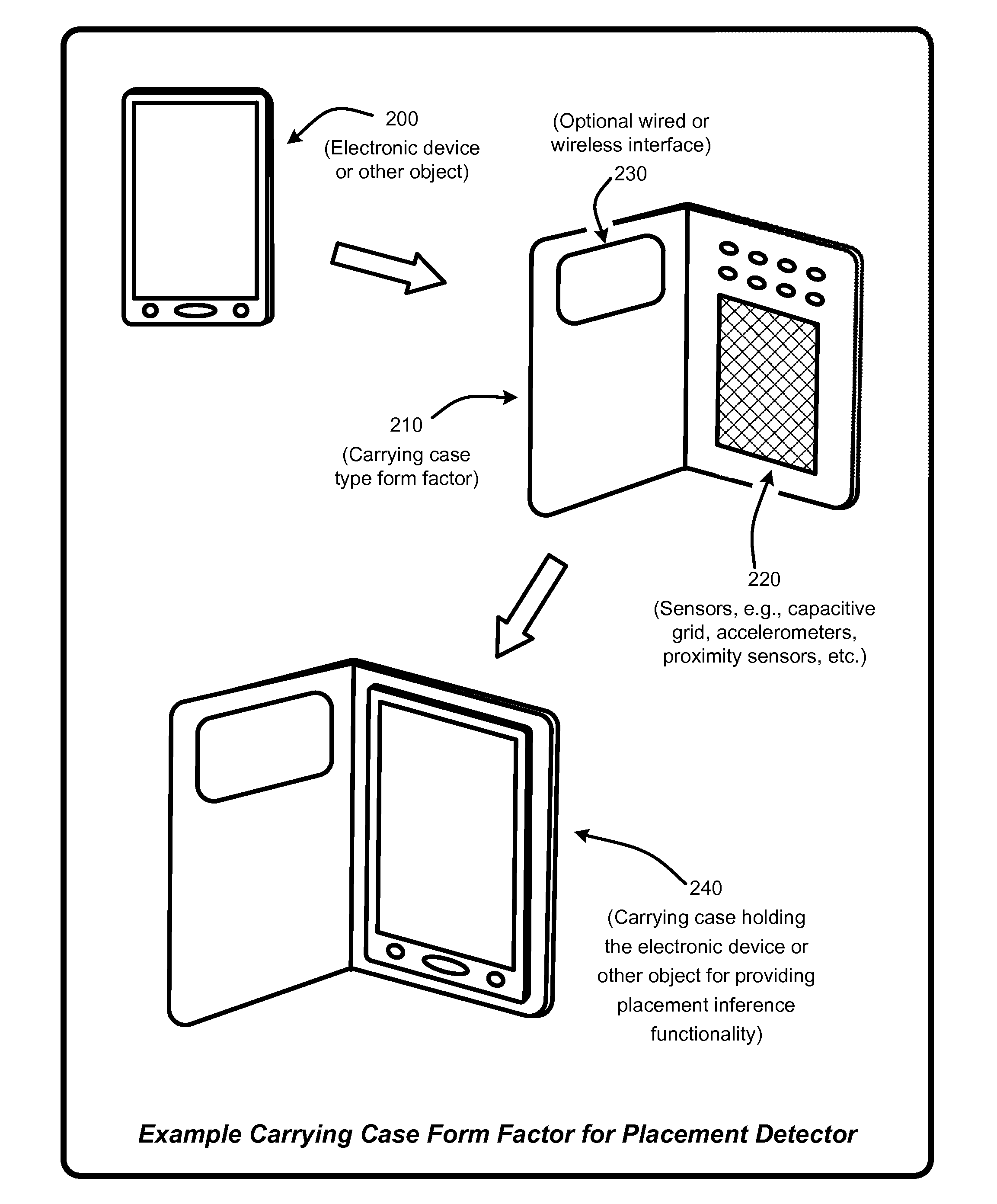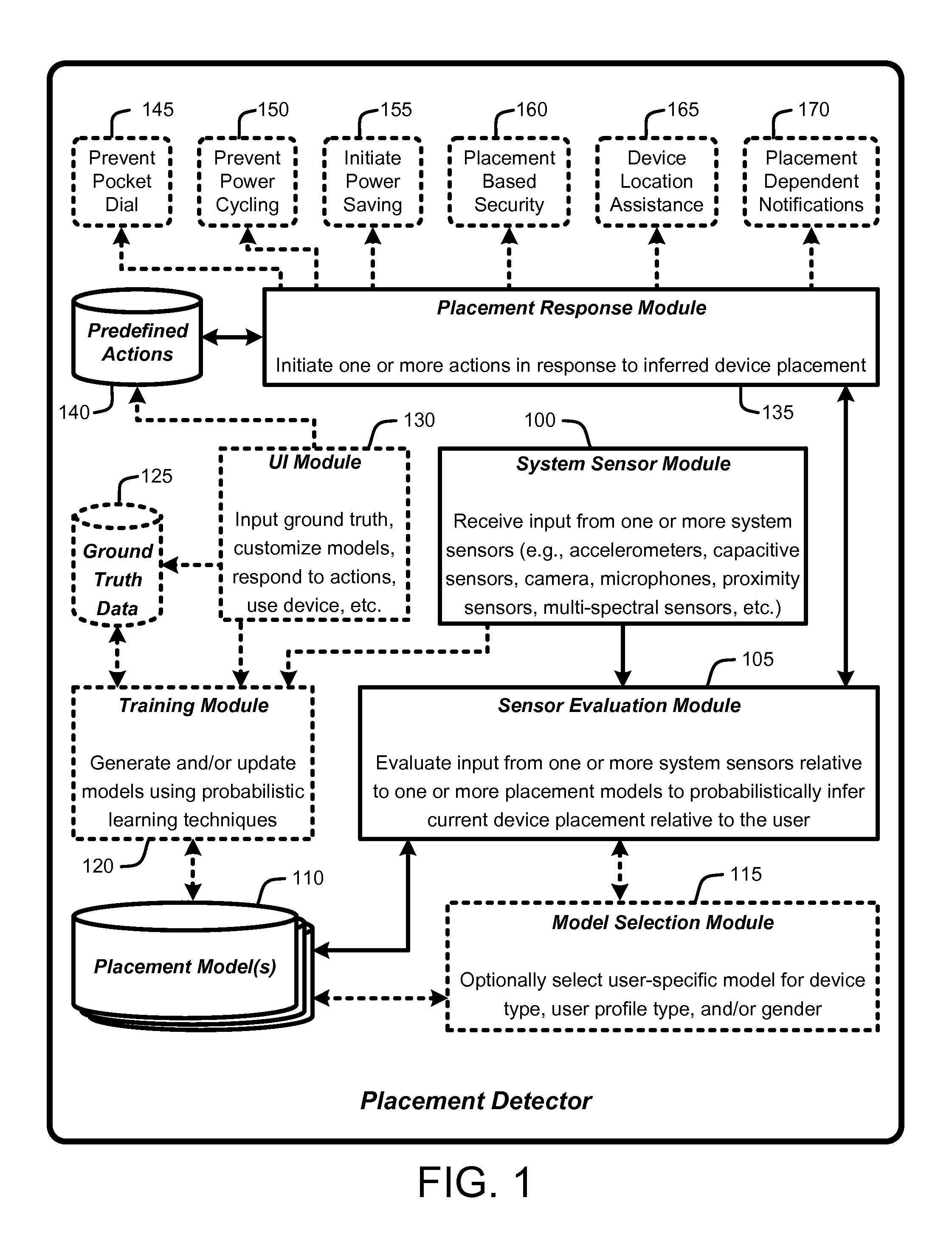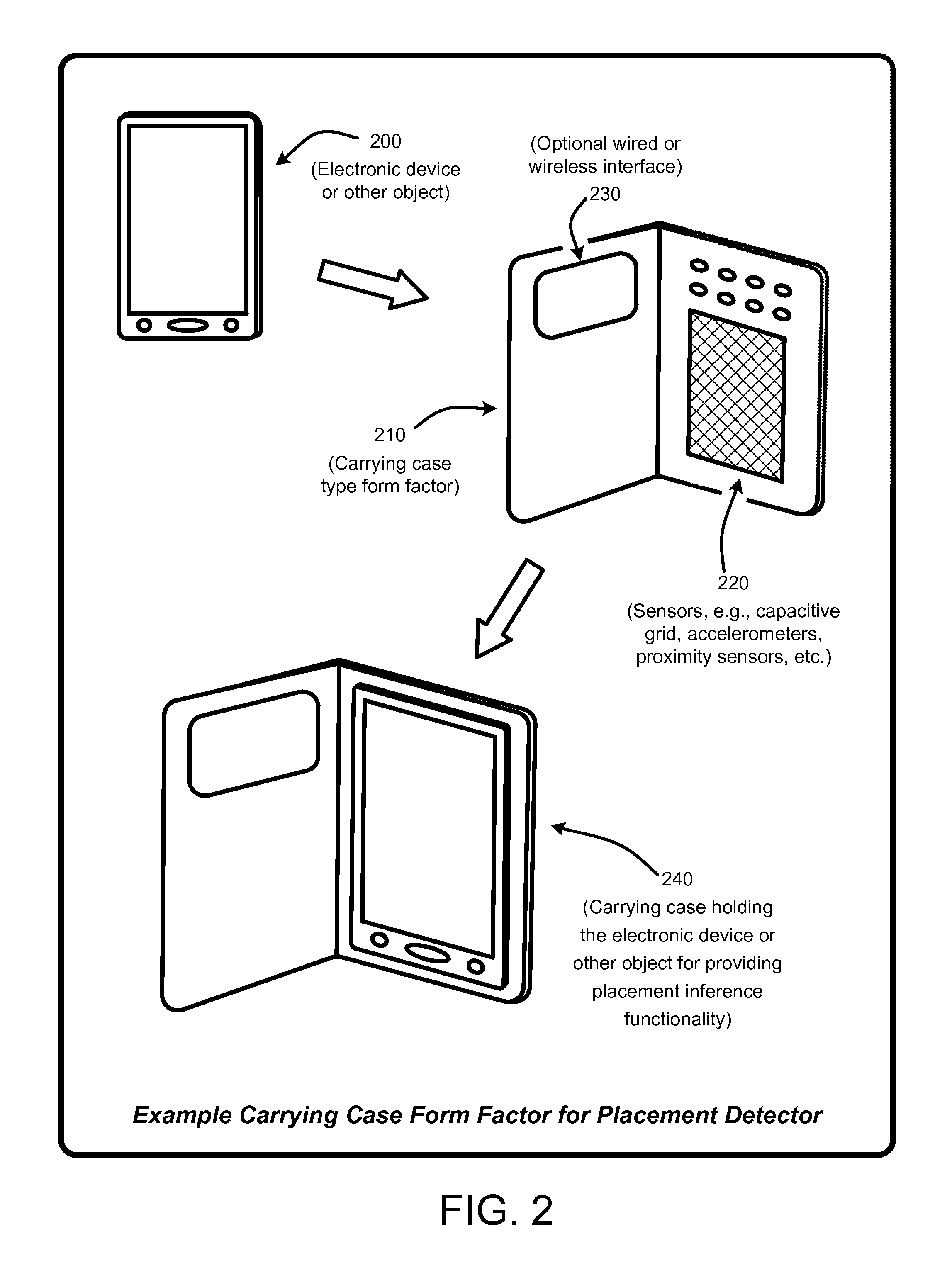Inferring placement of mobile electronic devices
a mobile electronic device and placement technology, applied in the field of inferring placement of mobile electronic devices, can solve the problems of inconvenient user the placement model is not as well as for various other placement locations, and the user can be annoyed by the authentication on smartphones or other handheld or mobile electronic devices, so as to facilitate a wide range of automated user-device interactions, prevent inadvertent “pocket dialing and prevent inadvertent power cycling
- Summary
- Abstract
- Description
- Claims
- Application Information
AI Technical Summary
Benefits of technology
Problems solved by technology
Method used
Image
Examples
Embodiment Construction
[0020]In the following description of the embodiments of the claimed subject matter, reference is made to the accompanying drawings, which form a part hereof, and in which is shown by way of illustration specific embodiments in which the claimed subject matter may be practiced. It should be understood that other embodiments may be utilized and structural changes may be made without departing from the scope of the presently claimed subject matter.
1.0 INTRODUCTION
[0021]In general, a “Placement Detector,” as described herein, provides various techniques for inferring placement of handheld electronic devices relative to a user in order to facilitate a wide range of automated user-device interactions. Example placement inferences relative to the user include, but are not limited to, inferring whether the device is currently in a user's hand, in a user's pocket, in a user's purse (or other carrying bag or backpack), in a closed area such as a drawer or box, in an open area such as on a ta...
PUM
 Login to View More
Login to View More Abstract
Description
Claims
Application Information
 Login to View More
Login to View More - R&D
- Intellectual Property
- Life Sciences
- Materials
- Tech Scout
- Unparalleled Data Quality
- Higher Quality Content
- 60% Fewer Hallucinations
Browse by: Latest US Patents, China's latest patents, Technical Efficacy Thesaurus, Application Domain, Technology Topic, Popular Technical Reports.
© 2025 PatSnap. All rights reserved.Legal|Privacy policy|Modern Slavery Act Transparency Statement|Sitemap|About US| Contact US: help@patsnap.com



